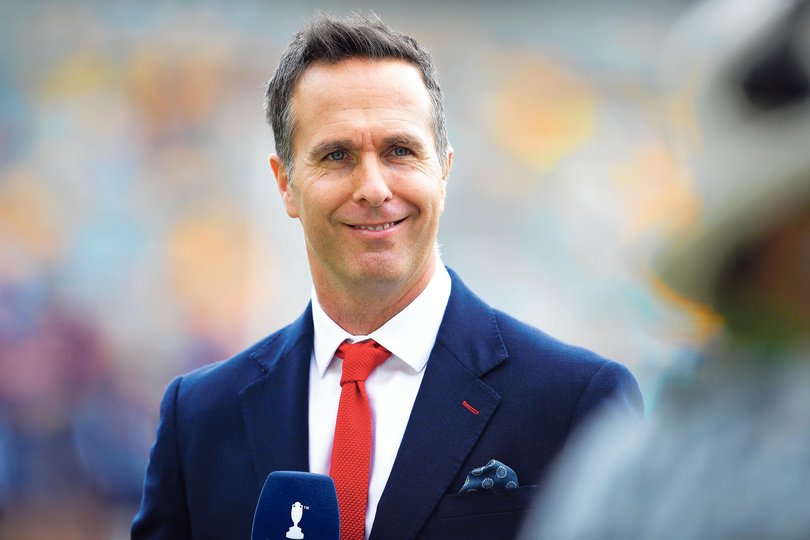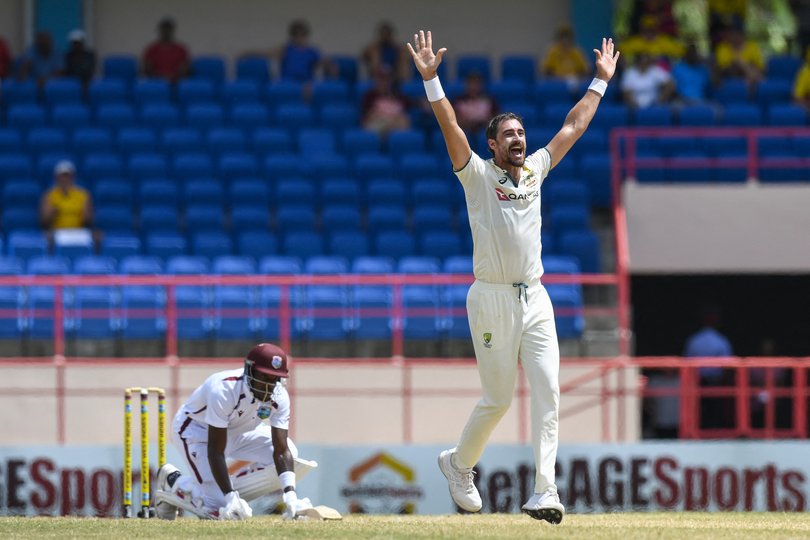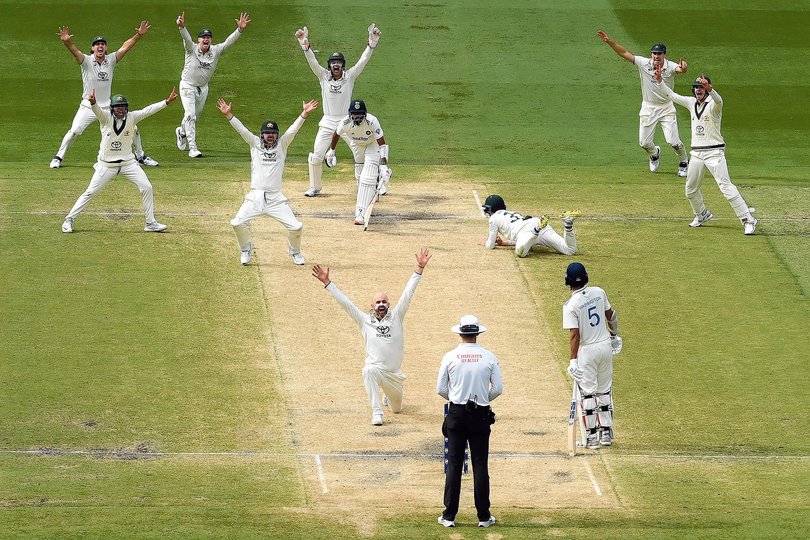JUSTIN LANGER: India and Australia must help struggling nations if Test cricket is to survive

A conundrum is an intricate and difficult problem. It is also defined as a question having only a conjectural answer.
American journalist and political aide Douglas Cater said in the 1950s: “The political conundrums involved . . . the problem of how the richer areas . . . can be made to subsidise the poorer.”
The world today faces conundrums on an unprecedented scale.
Sign up to The Nightly's newsletters.
Get the first look at the digital newspaper, curated daily stories and breaking headlines delivered to your inbox.
By continuing you agree to our Terms and Privacy Policy.Leaders are under enormous pressure to solve incredibly complex problems and challenges. Many of these are played out on a very public world stage where the stakes can be unbearably high.
Experience has shown me that decision-making is one of the hardest things about leadership.
Every decision has consequences, and it is impossible to keep everyone happy when choosing a course of action. The complexity of tough decisions runs deep and there are rarely simple solutions to hard calls.
Obviously, not on the scale of war or famine, and their unfathomable consequences, but an example of the complexities of a current conundrum is the game I love, cricket.
World cricket stands today at a fascinating yet perilous crossroads.
On the one hand, the game has never been more visible, more lucrative, or more entertaining to millions of fans around the globe.
On the other, the very foundations of the sport — its balance, its traditions, and its inclusivity — are under strain from an economic model that increasingly rewards the richest, while leaving the rest to scramble for survival.
Last week newly appointed CEO of Cricket Australia, Todd Greenberg, shared his thoughts on the future of international cricket.
“Scarcity in Test cricket is our friend, not our foe,” he said. “I don’t think everyone in world cricket needs to aspire to play Test cricket, and that might be OK.”
Greenberg, a good guy, a straight shooter and a cricket tragic — along with other administrators around the world — have sounded the alarm, warning that without serious intervention Test cricket could become the preserve of only three nations.
For the rest, the financial maths simply don’t add up.
Naturally, his comments drew a reaction — and to be fair to Greenberg — he acknowledged this by saying: “A lot of traditionalists might not like that. I’m not suggesting I know the number that will play, but literally we’re trying to send countries bankrupt if we force them to try to play test cricket.”
In England, former Test captains Michael Vaughan and Geoffrey Boycott led the charge of criticism.
Michael Vaughan posted on X, saying: “How about spread the wealth of the game around so this doesn’t happen?”
Boycott responded: “Absolutely spot on Michael. Australia, India and England are greedy they don’t want to give any away.”

Here in Australia, Mitchell Johnson wrote a beautifully articulated piece in The Sunday Times and The Nightly, noting: “If you really care about Test cricket, you don’t start by telling the smaller boards to play less of it. You start by helping them play more — the right way, with the right structures. You treat them like partners, not liabilities.
“And no, it’s not about handing out blank cheques. It’s about guidance. Strategy. Maybe even some hard truths. If you’re going to host a big Test series, put a percentage of the revenue back into pathways, coaching, and local facilities. Use the moment to grow your game.”
Having shared a dressing room with Mitch, I watched him transform from a raw talent into one of the most feared fast bowlers in cricket history. When he speaks about Test cricket with that fire in his belly, you listen.
His response to Greenberg’s comments weren’t just passionate rhetoric; it’s the voice of millions who understand what the five-day format truly means. It is also the voice of so many of the players around the world who are passionate about keeping the game alive.
Johnson bowled with heart, fought with courage, and never took the easy path. His vision for Test cricket reflects those same values, as does his honest and courageous assessments of the game.
Having sat in the board room of the ICC World Cricket Committee over the last few years, I know every nation wants to sustain Test cricket. That is a given. But this is not easy, simply because Test cricket is so expensive to run. And as Greenberg honestly states, most countries don’t have the means to keep the show on the road.
The obvious answer is to re-direct the distribution of wealth as Vaughan and others suggest. Simple. But it’s not. And here in lies the conundrum.
India has become the beating heart of modern cricket. Cricket and cricketers should be thanking India every day for the wealth they generate for individuals and for the other cricketing nations around the world.
When India tour any of the countries, including Australia and England, those countries cash in.
Not only because of the broadcast money their tours demand, but also for the extraordinary love Indians have for the game. Where there is cricket, Indians will follow.

The IPL, with its billion-dollar broadcast deals and glitzy showpiece, is not just a tournament anymore, it’s an empire. In its latest broadcast cycle, the IPL is pulling in more than six billion dollars. Per season, that’s more than a billion dollars in media rights alone, second only to America’s NFL.
Compare that with the Australian domestic rights at around $140 million, or South Africa’s fledgling SA20 at $10m a year, and you start to understand the scale of India’s dominance.
With numbers comes power. At the International Cricket Committee (ICC) table, India contributes more than two-thirds of world cricket’s media revenue. Because of this, their distribution each year is the highest by a fair margin.
England, Australia, and the rest split what’s left. Many cry foul at the imbalance. But as in life, those who make the money, and bring the audience, often argue they deserve the largest slice of the pie. From one perspective, it’s hard to disagree.
No one I know wants to pay more tax or more royalties. That is human nature. Philanthropy is one thing, but we live in a world where you do the work, take the risks and get rewarded for it.
Those who have big families to feed want to distribute their wealth where they want it to go, not where someone else wants it to. In Indian cricket’s case, they have a massive family to feed — 1.5 billion cricket-loving people who want a piece of the pie in one way or another.
Walk through the streets of any Indian city, and you see why. Kids with cricket bats in hand, televisions humming with the game, heroes plastered on billboards. Tens of millions of children are not just watching cricket, they’re dreaming it.
That visibility is powerful. It creates role models, it builds infrastructure, it fuels ambition. India doesn’t just have the money; it has the numbers. The rich are not just getting richer, but they are getting stronger.

IPL teams and successful Indian companies and individuals are buying up teams in South Africa, the UAE and the West Indies.
The Hundred tournament in England (a version of the BBL in Australia) has just become privatised. You guessed it, bought predominantly by Indian corporations. Australian cricket is considering the same path.
But here’s the catch. Cricket is only truly cricket if it’s global. The game has always thrived on the magic of competition — the West Indies’ flair, Bangladesh’s giant-killings, Pakistan’s consistently inconsistent brilliance and New Zealand’s quiet rise to World Test Champions and perennial underdog world beaters. Yet, many of these nations are hanging on by a thread.
Cricket is also more unique than any other sport in the world because it is played over five days, one day, 20 overs, 100 balls and 10 overs. This is a wide variety of formats no other sport delivers.
Test matches are expensive beasts to run. Five days of stadium costs, staff, travel, accommodation — all for crowds and broadcast returns that barely scratch the surface unless India, England, or Australia are involved. They are also the biggest revenue raisers in Australia and England. Far greater than their T20 domestic competitions.
In contrast, a T20 can pack out a ground, deliver instant ad dollars, and be wrapped up in three hours. The smaller nations rely on these currently for their revenue.
Players from smaller boards look to the T20 leagues to make their livings.
If you’re a young West Indian or South African, an IPL, PSL, ILT20 contract can far outweigh what your national board can pay. Who could begrudge a young man trying to secure his family’s future?
But it leaves those same boards stripped of their best, forced to compete with half-strength, less talented sides.
As a result, the international game is weaker. After Australia annihilated the West Indies in three Test matches last month, the once mighty force of West Indian legends called a forum to say enough is enough.
A proud cricket nation who many of us grew up admiring and aspiring, are again looking for solutions to their woes. Unfortunately, all the talking in the world won’t change a thing, unless there are solutions. Solutions that seem a world away in cricket’s current state.
Cricket has always been about more than money. It’s about contest. It’s about a boy from Barbados bowling bouncers at an Aussie great, or a Kiwi fast bowler testing the patience of an Indian superstar. Those moments make the game what it is.
If we allow imbalance to crush those contests, then yes, the rich might get richer — but the game itself becomes poorer.
Therein lies the conundrum.
